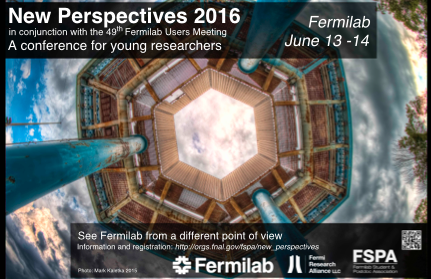Conveners
Session 4: The Test Beam and Prototype Program at Fermilab
- Steve Brice (FNAL)
Mr
Karl Warburton
(University of Sheffield)
13/06/2016, 16:30
Liquid argon time projection chambers (LArTPCs) provide a robust method for measuring interactions by combining 3D event imaging with excellent spatial resolution. A LArTPC design has been chosen as the far detector technology for the Deep Underground Neutrino Experiment (DUNE), which will have a fiducial mass of 40 kton. This will consist of 4 staged 10 kton modules, each one representing a...
Mr
Gregory Pulliam
(Syracuse University)
13/06/2016, 16:45
The Liquid Argon Time Projection Chamber (LArTPC) represents one of the most advanced experimental technologies for physics at the Intensity Frontier due to its full 3D-imaging, excellent particle identification (PID), and precise calorimetric energy reconstruction. By deploying LArTPCs in a dedicated calibration test beamline at Fermilab, the LArIAT program aims to experimentally calibrate...
William Foreman
(University of Chicago)
13/06/2016, 17:00
The LArIAT collaboration operates a liquid argon time projection chamber (LArTPC) in a beam of charged particles at the Fermilab Test Beam Facility. Its light collection system uses TPB-coated reflector foils on the field cage to down-shift vacuum-ultraviolet scintillation photons into the visible regime and reflect them back into the volume where they can then be detected by PMTs and SiPMs. A...
Dr
Jonathan Eisch
(Iowa State University)
13/06/2016, 17:15
The Accelerator Neutrino Neutron Interaction Experiment (ANNIE) is a new water-Cherenkov neutrino detector at Fermilab. It aims to measure the neutron yield of neutrino-nucleus interactions. As future experiments seek to make more precise measurements of neutrino oscillations, improving estimation of the initial neutrino energy will be key. Located in the Booster Neutrino Beamline, the 30 ton...
Dr
Vincent Fischer
(UC Davis)
13/06/2016, 17:30
The Accelerator Neutrino Neutron Interaction Experiment (ANNIE) aims at measuring the neutron abundance in the final state of neutrino-nucleus interactions. This measurement will have a direct impact on our understanding of neutrino interactions and will lead to a better reduction of systematic errors and an improvement of signal-background discrimination in future large neutrino detectors,...
Mr
Emrah Tiras
(University of Iowa- High Energy Physics)
13/06/2016, 17:45
Particle physics experiments like those at the LHC and future colliders need radiation-resistant scintillators more than ever due to increasing instantaneous luminosity resulting in unprecedented radiation conditions. In this context, we have studied several polyethylene-based and quartz-based scintillating materials. The organic scintillators, polyethylene naphthalate (PEN) and polyethylene...
